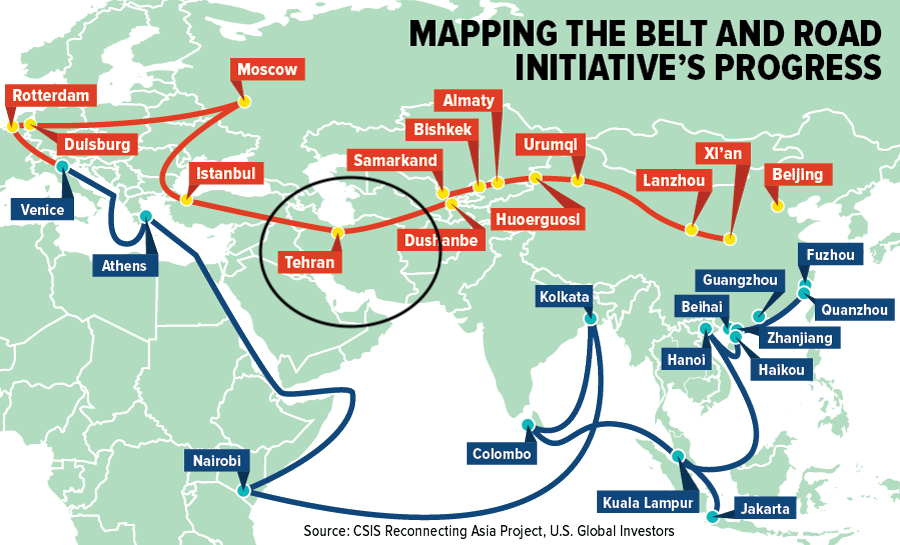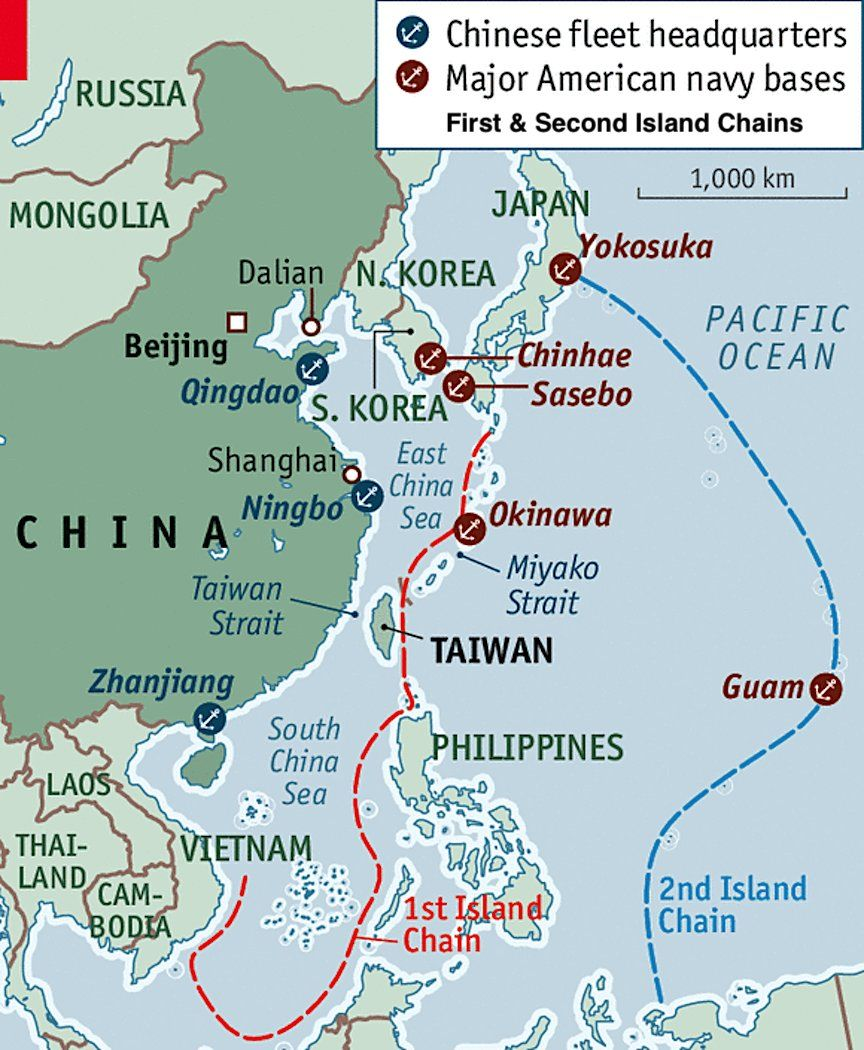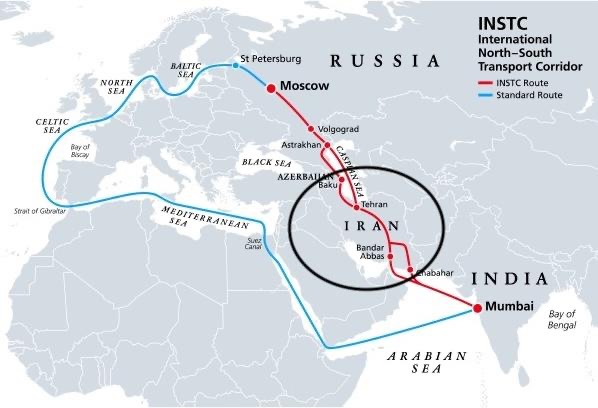Posted November 13, 2024
By Sean Ring
Two Big Reasons Trump Can’t Touch Iran
I know, I know. Joke Biden was soft on Iran and let the mullahs get away with whatever they wanted. Unfreezing $6 billion in funds was unwise, to say the least.
But there are genuine reasons why Iran is untouchable, no matter what the Israelis or Sheldon Adelson’s widow wants. (According to USA Today, Adelson has given $95 million to the Preserve America PAC, per Federal Election Commission filings. Adelson and her late husband gave a similar amount to a Trump-backed super PAC in 2020.)
And I’m not going to say, “Russia and China.” Yes, they’re the big powers behind Iran. But there are critical economic reasons for them to do so.
I bring up this subject because this morning, I read that Russia’s and Iran’s payment systems have just been linked. Small beer, you say? Maybe. But it’s undeniably another brick in the de-dollarization wall.
During a rally in Wisconsin before the election, The Donald promised to fight to keep the U.S. dollar as the world’s reserve currency.
“Many countries are leaving the dollar. They’re not going to leave the dollar with me. I’ll say, you leave the dollar, you’re not doing business with the United States because we’re going to put 100% tariff on your goods,” he said.
It’s tough negotiation talk, but it's probably not feasible.
Back in March, Trump said, “I hate when countries go off the dollar. I would not allow countries to go off the dollar because when we lose that standard, that will be like losing a revolutionary war. That will be a hit to our country.”
He’s correct, but that’s the cost of sanctions. Countries simply can’t risk their wealth being stored in a currency that may be confiscated.
They’ve built ways around those sanctions, and two of those ways run straight through Iran. Let’s get the maps out so you can see why the USG’s future position is already untenable.
The Belt and Road Initiative

Credit: GoldSeek
Iran is practically smack in the middle of the above map (black circle). That’s China’s vaunted Belt and Road Initiative, resulting from the US’s “First Island Chain” strategy in the Pacific (below map).

Credit: The Economist
The Chinese figured if they can’t go by sea, they’ll go by land. And they smartly couched their project in a rhetoric that made them seem magnanimous. But like the good little capitalists (dressed as commies) they are, building a railroad from Beijing to Rotterdam is a good thing, no matter the motive.
The BRI comprises two main segments: the Silk Road Economic Belt (red) and the 21st Century Maritime Silk Road (blue).
Silk Road Economic Belt: This overland component spans Central Asia, Europe, and parts of the Middle East. It focuses on creating a network of railways, highways, and pipelines that connect China to Europe through Central Asia. Key countries along this route include Kazakhstan, Russia, Belarus, and Germany.
21st Century Maritime Silk Road: This maritime route stretches from China’s coastal ports, passing through Southeast Asia, South Asia, East Africa, and the Mediterranean, ultimately reaching Athens’ Piraeus port and Venice.
Let’s examine the overland route through Iran and contrast it with the standard shipping route for moving goods from Beijing to Rotterdam.
On the traditional maritime route, goods are transported by road or rail from Beijing to the Port of Tianjin. From Tianjin, cargo is shipped by sea, passing through the South China Sea, the Strait of Malacca, the Indian Ocean, the Suez Canal, and the Mediterranean Sea, and finally reaching the Port of Rotterdam.
This sea route generally takes 30 to 40 days, depending on shipping schedules, weather conditions, and port congestion.
Sea freight is often cheaper for large volumes of goods. As of November 2024, shipping a 20-foot container from China to Rotterdam costs approximately $2,565, while a 40-foot container costs around $4,680.
The overland rail route from Beijing to Rotterdam via Iran takes 18 to 24 days.
Rail freight costs are generally higher than sea freight, but you’ll pay for fewer days. Rail transport offers a balance between speed and price, making it a viable option for goods requiring faster delivery than sea freight can provide.
Because of this, China will protect its interests in Iran.
Next, let’s look at the vertical route.
The International North-South Transportation Corridor

The International North-South Transport Corridor (INSTC) is a 7,200-kilometer, multimodal trade route that connects India and Russia through Iran. The project aims to establish an alternative trade corridor to traditional maritime routes, particularly the Suez Canal.
The INSTC involves sea, rail, and road transport networks that reduce the distance and transit time between India and Russia by 30%.
The route begins in Mumbai, crosses the Arabian Sea to Iran’s Chabahar or Bandar Abbas ports, and continues overland through Iran to the Caspian Sea, eventually reaching Russia. The INSTC also includes connections to Central Asia and the Caucasus region, providing access to markets in Azerbaijan, Kazakhstan, and beyond.
The INSTC would foster closer economic ties between India, Russia, and Iran. By providing a faster and more cost-effective alternative to the Suez Canal route, the INSTC would reduce shipping times, benefiting Indian and Russian exporters.
For India, the INSTC bypasses Pakistan, giving it direct access to Central Asia.
India, Russia, and Iran see the corridor as a means to assert its own economic and strategic interests in the region. This corridor also complements the Eurasian Economic Union (EAEU), a Russia-led initiative to integrate economies in the post-Soviet space.
Going from Moscow to Mumbai gets dramatically shorter.
Going the sea route typically takes 30 to 45 days, depending on factors like shipping schedules, weather conditions, and port congestion. While specific costs can vary, the traditional maritime route is generally more expensive due to the longer distance and associated fees, such as those for transiting the Suez Canal.
The INSTC significantly reduces transit time, with estimates ranging from 15 to 24 days, effectively halving the time compared to the traditional route. It’s projected to reduce carriage costs by approximately 30% compared to the traditional maritime route.
As you can see, India and Russia have a big dog in this fight.
Wrap Up
Tough talk is all well and good, but when the rubber hits the road, The Donald is going to have a far tougher time dealing with Iran now than in his first administration.
China, India, and Russia have huge vested interests in Iran’s stability. And though India is one of Israel’s closest allies, money talks.
If the USG wants a world war, attacking Iran would be the easiest way to get it. It needs to follow the Vice President-elect’s sage advice to avoid this catastrophic outcome.

Did America Just Lose The Great Game?
Posted December 08, 2025
By Sean Ring

L'oro dell'Italia
Posted December 05, 2025
By Sean Ring

The Border Threat No One Saw Coming
Posted December 04, 2025
By Sean Ring

Beating Inflation by Following the Trend
Posted December 03, 2025
By Sean Ring

The Curious Case of the Disappearing Silver
Posted December 02, 2025
By Sean Ring

